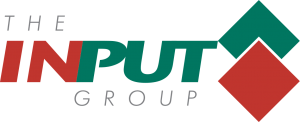Are you wondering what PPE you need to supply to your employees?
So what does the law say on PPE?
The Personal Protective Equipment at Work Regulations 1992, relates to the use of personal protective equipment and states:
Every employer shall ensure that suitable personal protective equipment is provided to his employees who may be exposed to a risk to their health or safety while at work except where and to the extent that such risk has been adequately controlled by other means which are equally or more effective. Regulation 4
The Personal Protective Equipment (Enforcement) Regulations 2018, refers to the supply of personal protective equipment once you have assessed the risks and the hazards within your workplace.
Not only do employers have to provide appropriate personal protective equipment, they also are required to train employees on how to maintain and use PPE correctly. PPE must be readily available with documentation to refer to. It is worth noting that an employee does not need to pay for his or her own safety equipment, as this is the responsibility of the employer.
Section 9 of the Health and Safety at Work etc Act 1974 states:
“No employer shall levy or permit to be levied on any employee of his any charge in respect of anything done or provided in pursuance of any specific requirement of the relevant statutory provisions”
Its worth noting the HSE are the enforcing authority for the supply of PPE that is designed for use at work.
If the only way to manage those risks and hazards is to use PPE then you need to think about
The training and supervision required to ensure effective PPE use
- Choose equipment that suits the user – consider the size, fit and weight of the PPE. If the users help choose it, they will be more likely to use it,
- What if more than one item of PPE is worn at the same time, can be used together, eg wearing safety glasses may disturb the seal of a respirator, causing air leaks,
- How you distribute your PPE when replacements are needed (and when people MUST replace items like dust masks or safety helmets expire,
- Ensuring you buy CE marked PPE so it doesn’t fail in use
Never allow exemptions from wearing PPE for those jobs that ‘only take a few minutes’
But today as more people return to the workplace there’s extra protective equipment you might need to think about to help with infection control.
Such as:
- screens between desks
- a thermometer for employees to check their temperature
- lateral flow tests
- disposable gloves and masks
- bacteria wipes, hand sanitiser and germ killer cleaning products.
We do hope that you find the guidance contained in this blog useful. If you are interested in finding out more please get in touch Contact




